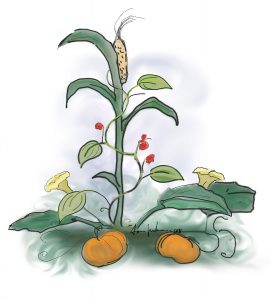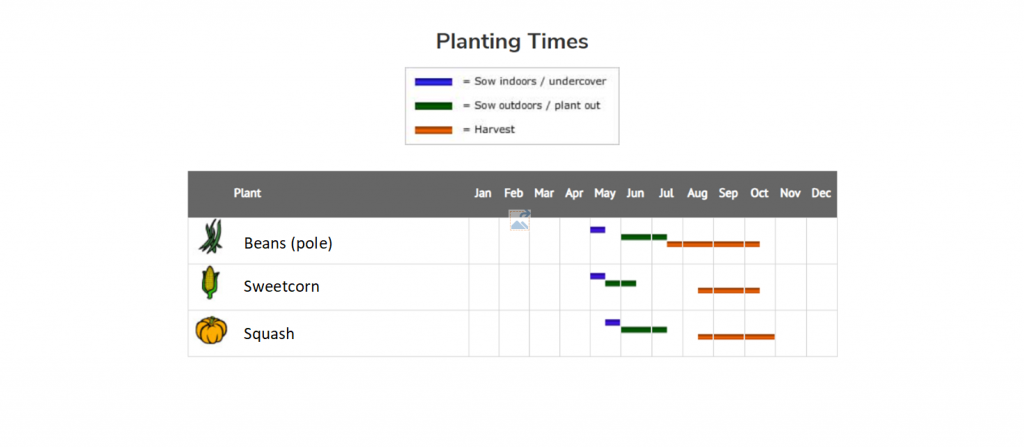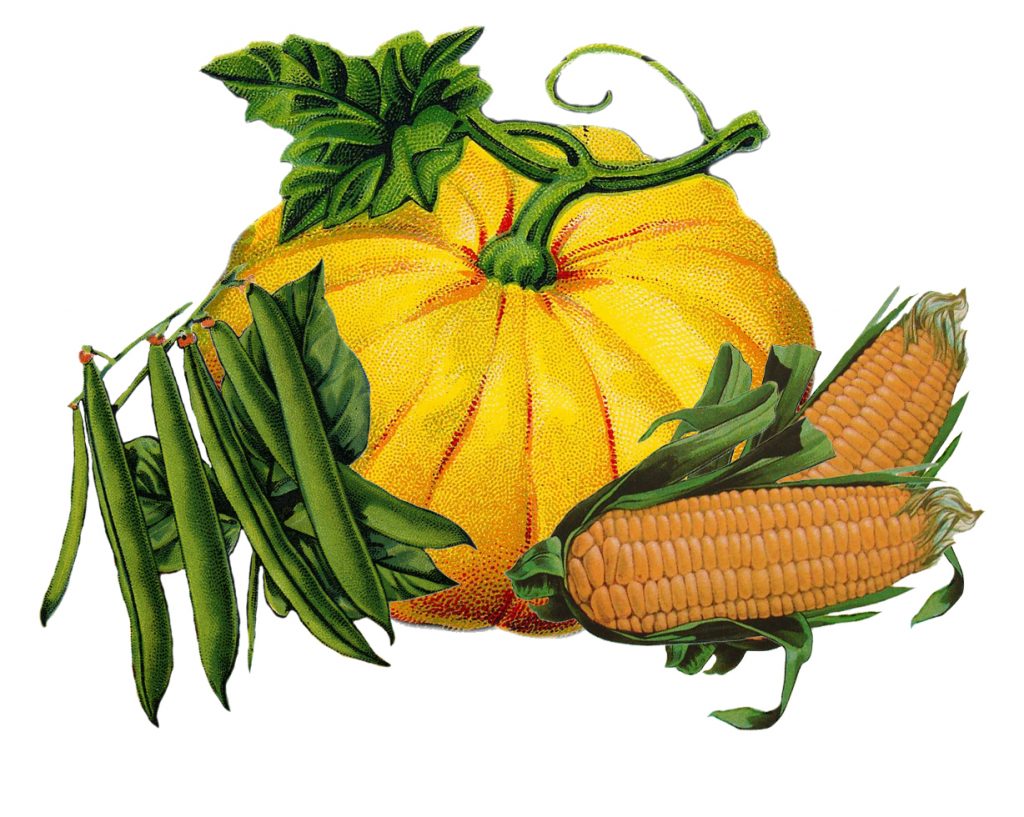WHAT ARE THE THREE SISTERS?
The Three Sisters are the three main agricultural crops of various indigenous groups in North America: winter squash, maize (corn), and climbing beans (typically tepary beans or common beans).
The ‘three sisters method’ is companion planting at its best, with three plants growing symbiotically to deter weeds and pests, enrich the soil, and support each other.
The tradition of growing sweetcorn, beans and squashes together is laid down in the stories of the Iroquois people (Native North Americans) who believed that corn, beans and squash were three inseparable sisters and would only grow and thrive together. Bringing things right up to date, it is easy to see that the tradition describes a sustainable growing method providing long-term soil fertility and maximizing growing space.
By the time European settlers arrived in America in the early 1600s, the Iroquois had been growing the “three sisters” for over three centuries. The vegetable trio sustained the Native Americans both physically and spiritually. In legend, the plants were a gift from the gods, always to be grown together, eaten together, and celebrated together.
HOW TO PLANT THE THREE SISTERS
There are many variations to the Three Sisters method, but the idea is to plant the sisters in clusters on low wide mounds rather than in a single traditional row.
Before planting, choose a sunny location (at least 6 hours of full sun every day). This method of planting isn’t based on rows, so think in terms of a small field. Each hill will be about 4 feet wide and 4 feet apart, with 4 to 6 sweetcorn plants per hill. Calculate your space with this in mind.
- In the spring, prepare the soil with plenty of organic matter and weed-free compost.
- Make a mound of soil about a foot high and 3 to 4 feet wide with a flat top that is about 10 inches across. If you are doing more than one mound, space them at least 4 feet apart.
- Plant the sweetcorn first once the danger of frost has passed. This needs to be done by the end of May since sweetcorn requires a longer growing season.
- Sow around six sweetcorn kernels an inch deep in the flat part of the mound, about ten inches apart in a circle.
- Don’t plant the beans and squash until the sweetcorn is about 6 inches to 1 foot tall. This ensures that the corn stalks will be strong enough to support the beans. The beans’ role is to fix nitrogen in the soil, which is needed for strong sweetcorn production.
- Once the sweetcorn is 6 inches to 1 foot tall, plant four bean seeds, evenly spaced, around each stalk.
- About a week later, plant six squash seeds, evenly spaced, around the perimeter of the mound. See the spacing for squash on your packet; usually this is about 18 inches apart. You may wish to put two seeds in each hole to ensure germination.
- By September, they should be ready to harvest.
Sometimes a fourth sister is included, such as a sunflower or amaranth, which attracts pollinators and lures birds away from the seeds. Sunflowers can be planted at the cross section of the spaces between the corn hills, and harvested for seeds. Amaranth could come up among the squash, and could be harvested both for greens and for seeds.


